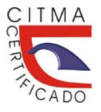Effects of humidity, performance and energy savings with wind pumping in sprinkler irrigation
DOI:
https://doi.org/10.5281/zenodo.14968783Keywords:
energy saving, cultivation, garlic yield, humidity, pumpingAbstract
Introduction: The use of wind pumping for sprinkler irrigation eliminates the need for fossil fuels, which significantly reduces energy consumption. Energy savings depend on the availability and quality of the wind resource at the specific location, this allowed an energy saving of 27.66 kWh, which represents an amount of 146.77 kg of CO2 equivalent per hectare, which was not emitted into the atmosphere. Wind pumping can be a cost-effective option in areas with good wind potential and high conventional energy costs. Objective: To determine the effects of humidity, energy savings and yield in garlic cultivation with the sprinkler irrigation system at the lowest possible cost. Method: The irrigation system is powered by wind energy through a multi-blade windmill with a tower height of 10 m. The following initial data were used to design the windmill, based on the experience of producers and technical criteria established for this type of device. Results: show that for these incident wind speed conditions the useful power of the wind pump increases according to the wind rotor revolution values that range between 18.95 and 90.95 rpm, with a power coefficient of 0.22 in accordance with the weather conditions of the site and the specific characteristics of the designed windmill. Conclusion: It was obtained that the theoretical and real flow of the volumetric pump varies proportionally with the incident wind speed, the total precipitation in that period is 169.46 mm, it is observed that from the precipitation regime of the locality; however, the one that can be used by the crop is 61.67 mm for a coefficient of use of the rain of 0.36. In addition, in the three campaigns evaluated the yield of the crop reached values of 4.38 t / ha-1; 4.51 t / ha-1 and 4.46 t / ha-1 respectively, with an average of 4.45 t / ha-1.
Downloads
References
Ahuja, D. (2008). PeoplePower. Nature, 456, 25. https://www.nature.com/nature/journal/v456/n1s/full/twas08.25a.html
Allen, R. G., Pereira, L. S., Raes, D. y Smith, M. (2006). Evapotranspiración del cultivo. Guías para la determinación de los requerimientos de agua de los cultivos. Estudio FAO, riego y drenaje, nº 56. Roma, Italia: Editorial FAO.
Cabezas, M. D., Franco, J. I. y Fasoli, H. J. (2018). Diseño y evaluación de un panel solar fotovoltaico y térmico para poblaciones dispersas en regiones de gran amplitud térmica. Ingeniería Investigación y Tecnología, 19(2), 209-221.
Carrión, S., Daza, P., Quilli, A., Sánchez, G. y Tapia, C. (2017). Análisis del Caudal Real vs Teórico por medio del Medidor Venturi. https://www.researchgate.net/publication/321171662_Analisis_del_Caudal_Real_vs_Teorico_por_medio_del_Medidor_Venturi/citation/download
Castellanos, J. Z., Vargas, T. P., Ojodeagua, J. L., Hoyos, G., Alcantar, G. G., Méndez, F. S., Álvarez, S. E., y Gardea, A. A. (2004). Garlic Productivity and Profitability as Affected by Seed Clove Size, Planting Density and Planting Method. HortScience, 39(6), 1272-1277.
Chang, T. P. (2011). Estimation of wind energy potential using different probability density functions. Appl Energy, 88(5), 1848-1856.
Demin, P. E. (2014). Aportes para el mejoramiento del manejo de los sistemas de riego. Métodos de riego: fundamentos, usos y adaptaciones. Catamarca, Argentina: Editorial INTA.
Diriba, G., Nigussie, R., Woldetsadik, K., Getachew, T., y Sharma, J. J. (2014). Bulb quality of garlic (Allium sativum L.) as influenced by the application of inorganic fertilizers. African Journal of Agricultural Research, 9(8), 784-796.
Erisman, J., Brasseur, G., Ciais, P., Van Eekeren, N. y Theis, T. (2015). Global change: Put people at the centre of global risk management. Nature, 519, 151-153.
FAO. (2008). Bosques y energías. Cuestiones claves. Roma, Italia: Editorial Organización de las Naciones Unidas para la agricultura y la Alimentación
Fernández, P. (2000). Antecedentes Históricos y fuentes eólicas. Cantabria, España: Editorial de la Universidad de Cantabria.
Fernández, R. (2010). Manual de riego para agricultores: módulo 3. Riego por aspersión. Editorial Consejería de Agricultura y Pesca.
Fleming, P. D. y Probert, S. D. (1982). Design and performance of a small shrouded Cretan windwheel. Applied Energy, 10, 121-139.
Franquet, J. M. (2017). Diseño económico de tuberías. Diámetro óptimo en impulsiones. Universidad Nacional de Educación a Distancia. Tortosa, España: Editorial Universidad Nacional de Educación a Distancia. https://www2.uned.es/ca- tortosa/Biblioteca_Digital/Biblio/JM_Franquet/
Galán, N., Orozco, E., Mejías, N. y Mellado, C. (2015). Análisis Estadístico de la Velocidad del Viento en Mazatlán Sinaloa. Revista de Análisis Cuantitativo y Estadístico, 2(4), 288-294.
García, E. (2013). World Energy Insight. World Energy Council, First, London. http://www.worldenergy.org/wp-content/uploads/2013/
García, M., Montoya, C. A., Barroso, C. L., Pérez, C. A. y Reyes, B. (2014). Reducción de la fertilización nitrogenada en el cultivo del ajo. Revista Hombre, Ciencia y Tecnología, 18(1), 58-67.
Giraudi, C. M. (2014). Factibilidad de instalación de sistemas fotovoltaicos conectados a red. Ingeniería Energética, 35(2), 141-148. https://dialnet.unirioja.es/ejemplar/370180
Gómez, L. (2015). Análisis de la viabilidad técnica y financiera de la generación de energía eléctrica a partir del recurso eólico en el municipio de Pereira. [Tesis de Maestría, Universidad EAFIT, Medellín, Antioquia, Colombia].
González, R. L. y Rodríguez, N. I. (2003). Influencia de la aplicación de Azospirillum en el crecimiento y desarrollo del cultivo del ajo (Allium sativum L). Revista Centro Agrícola, 30(2), 111-117.
Hanson, B., May, D., Voss, R., Cantwell, M. y Rice, R. (2003). Response of garlic to irrigation water. Agric. Water Manage, 58, 29-43.
Hauser, O., Rand, D., Peysakhovich, A. y Nowak, M. (2014). Cooperating with the future. Nature, 511, 220-223.
Izquierdo, H., y Gómez, O. (2005). Martínez» un clon de ajo (Allium sativum, L.) de alta calidad fitosanitaria y buen potencial de rendimiento. Revista Cultivos Tropicales, 26(2), 42-53.
Izquierdo, H., y Gómez, O. (2007). VIETNAMITA, un clon de ajo (Allium sativum L.) de alta calidad fitosanitaria y buen potencial de rendimiento. Revista Cultivos Tropicales, 28(1), 66-75.
Kumar, Y., Jordan, R., Soma, S., Vijay, K. D., Jin, L., Efstratios, N., Brett, A. y Abdollah, A. (2016). Wind Energy: Trends and enabling technologies. Renewable and Sustainable Energy Reviews, 53, 209-224.
Ley, N., González, E. y Mesa, L. (2009). Las premisas para asimilar nuevas tecnologías de procesos químicos a partir de estudio de laboratorios en etapas de pretratamiento e hidrólisis de materiales lignocelulósicos. Tecnología Química, 29(3), 25-36.
Macías, R., Grijalva, R. L. y Robles, F. (2010). Productividad y calidad de variedades de ajo (Allium sativum L.) bajo condiciones desérticas en Caborca, Sonora. Revista BIOtecnia, 12(1), 44-54.
Mancebo, U. (1995). Cálculo del diámetro más de la tubería de descarga de una planta de bombeo. Diámetro óptimo en impulsiones. Nota técnica. Revista Ingeniería Hidráulica en México, 10(1), 49-53.
Meier, T. (2014). Innovative business models and financing mechanisms for PV deployment in emerging regions. International Energy Agency-Photovoltaic Power System Programme (IEA PVPS), IEA PVPS Task 9, Subtask 5 Report IEA-PVPS T9-14:2014. http://www.iea-pvps.org/index.php?id=311
Montesinos, A. (2007). Historia de la energía eólica en Cuba, Revista Energía y Tú, (37), 9-17. http://www.cubasolar.cu/biblioteca/energia/
Moreno, Z. (2017). Sistema de aspersión solar para el desarrollo de policultivos en zonas de potencial hídrico. https://www.researchgate.net/publication/316911482
Ortiz, J. E., Valencia, P. F., Valdez, B. y Padilla, I. (2009). Maíz de otoño-invierno en riego por aspersión tipo avance frontal, en el sur de Sonora. Editorial Centro de Investigación Regional del Noroeste- Campo Experimental Valle del Yaqui.
Pacheco, J., Alonso, N., Pujol, P. y Camejo, E. (1995). Riego y Drenaje. Editorial Pueblo y Educación.
Pillai, I. y Banerjee, R. (2009). Renewable energy in India: Status and potential. Energy, 34(8), 970-980
Prato, A. I. (2016). Evaluación financiera de ajo (Allium sativum L.), morado Nacional y peruano en el altiplano cundiboyacense, Colombia. Corporación Colombiana de Investigación Agropecuaria, 17(1), 43-53.
Robles, C. y Rodríguez, O. (2018). Un panorama de las energías renovables en el mundo. Revista Espacios, Latinoamérica y Colombia 39(34), 10-24.
Steenblik, R. (2007). Biofuels – at what cost? Government support for ethanol and biodiesel in selected OECD countries. Ginebra, Suiza: Editorial del Instituto Internacional para el Desarrollo Sostenible.
Yan, J., Chou, S., Desideri, U., y Xia, X. (2014). Innovative and sustainable solutions of clean energy technologies and policies (Part I). Applied Energy, 130, 447-449
Downloads
Published
How to Cite
Issue
Section
License
Copyright (c) 2025 Universidad & ciencia

This work is licensed under a Creative Commons Attribution-NonCommercial-ShareAlike 4.0 International License.





















